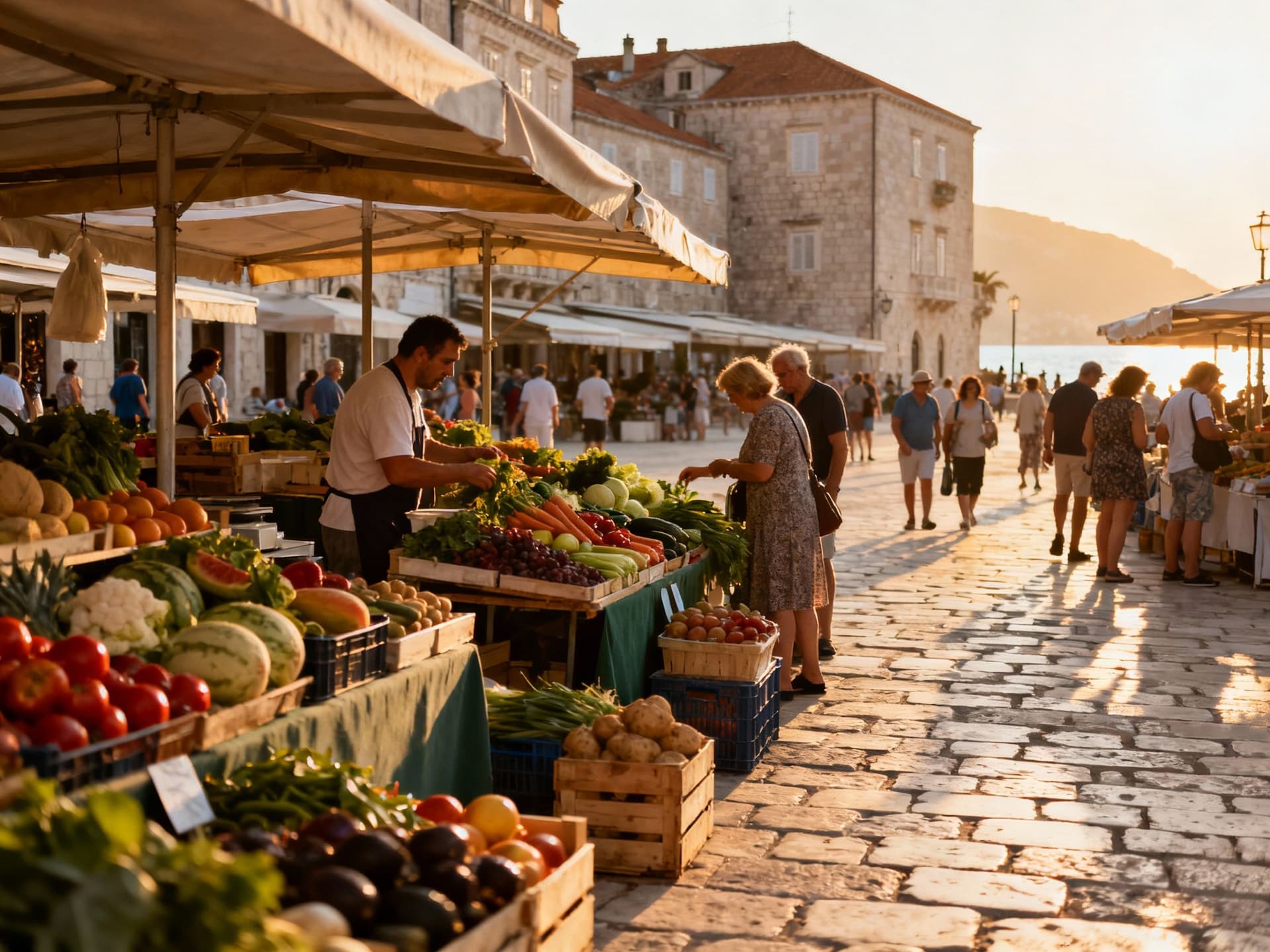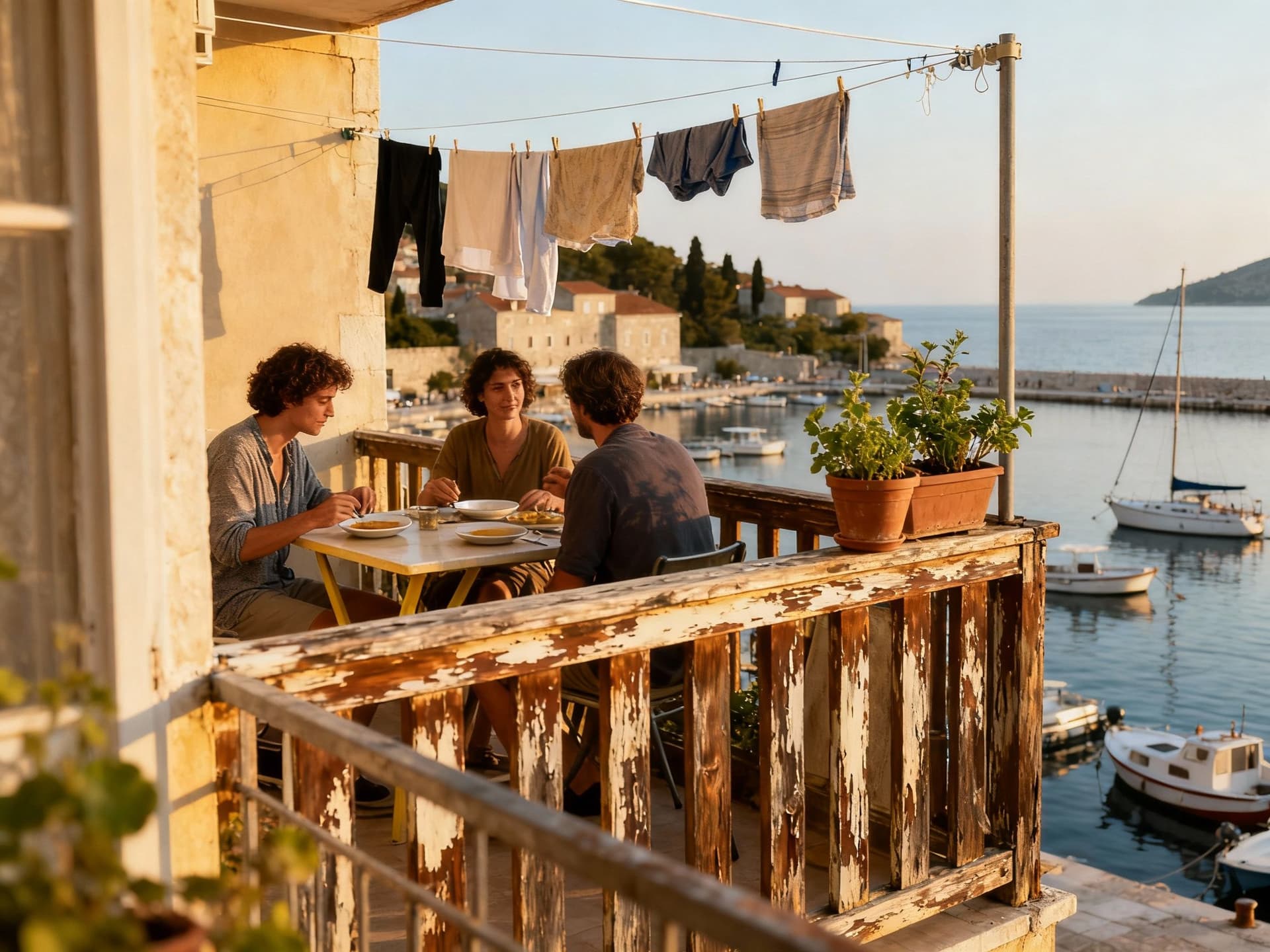When the Peak Season Lies: Croatia’s Year‑Round Yield Map
Croatia’s postcard season hides year‑round rental and yield opportunities—match neighbourhood life, seasonality data and product type to convert lifestyle into reliable returns.
Imagine an early spring morning in Dubrovnik: fishermen mending nets at Gruž, a barista pulling an espresso on Stradun, and narrow stone streets that feel lived‑in rather than staged. Now imagine that same day in late October — restaurants still open, tours smaller, and rents that stabilise while buying competition thins. That seasonal contrast is where Croatia’s most interesting investment stories hide: places that look 'summer‑only' on postcards but produce steadier returns off‑season.
Living the Croatia lifestyle

Croatia is a study in contrast: Adriatic stone towns and islands with café culture, and inland regions where markets, rivers and forests shape slow, local rhythms. Daily life blends seafront promenades in Split and Rovinj with continental coffee rituals in Zagreb neighbourhoods like Maksimir and Tkalčićeva. For international buyers that matters: lifestyle appeal drives demand in specific micro‑markets, and those micro‑markets determine yield dynamics more than national head‑lines.
Coastal character: Split, Rovinj, Dubrovnik
Split’s Riva and the Peristyle draw year‑round residents alongside seasonal visitors; Rovinj remains an Istrian art‑and‑food magnet; Dubrovnik’s Old Town is a unique supply constraint because UNESCO rules limit new product. Those distinctions translate to price per square metre differences — coastal prime can command a 20–50% premium versus regional coastal averages — but also to rental upside in shoulder months where demand outpaces supply.
Continental pulse: Zagreb and Zagorje
Zagreb has shifted from purely administrative city to a cultural and conference hub; 2024 saw growth in overnight stays and stronger winter demand, supporting longer leases. Nearby Zagorje and Slavonia offer lower entry prices per m² and rising domestic demand as Croatian buyers look for space — an important note for investors focused on capital preservation and diversification away from saturated coastal submarkets.
Lifestyle highlights that shape returns

Tourism remains the single largest demand engine — 2024 arrivals and nights increased, with stronger shoulder‑season activity — and local lifestyle anchors (markets, festivals, conference venues) are durable demand signals you can quantify before buying. Match the lifestyle magnet to rental product: short lets thrive near coastal Old Towns, while medium‑term lets work better in Zagreb and university towns.
Quick lifestyle checklist (what tenants and buyers actually want)
- Proximity to a lively waterfront promenade (Split Riva, Rovinj harbour)
- Year‑round services: grocery, pharmacy, good internet and co‑working (Zagreb, larger Dalmatian towns)
- Transport connections: ferry/airport access for islands and coastal towns
- Local cultural anchors: markets (Dolac in Zagreb), festivals and food scenes that extend the season
Making the move: practical considerations
House prices in Croatia have shown steady appreciation in recent years (house price indices rose through 2024 into 2025), but growth is uneven: prime coastal pockets outperformed while secondary coastal and inland markets lagged. For buyers this means location selection is a return driver — not just property quality. Use price per m², vacancy seasonality and local tourist metrics together, not in isolation.
Property styles and what they deliver
Stone town apartments: high tourist appeal, constrained supply, higher price per m² but strong short‑let potential. Suburban Zagreb apartments: stable long lets, lower volatility and predictable yields. Renovation‑grade Dalmatian villas: higher capex and seasonality risk, but attractive for multi‑year capital appreciation when purchased below replacement cost. Align product type to target tenant and lease length.
How to blend lifestyle and prudence — a 5‑step checklist
- 1) Map seasonality: compare monthly tourist nights (eVisitor/DZS) to planned rental model.
- 2) Price per m² vs achievable net yield: run scenarios with 60–80% of peak short‑let rates for conservative projections.
- 3) Validate local regulations and proposed property taxation changes affecting short lets and empty properties.
- 4) Inspect supply constraints: UNESCO areas, protected zones and island infrastructure raise barriers to new supply.
- 5) Partner with an on‑the‑ground manager who provides verified monthly occupancy and expense statements before you buy.
Insider knowledge: what expats wish they'd known
Two practical surprises recur among expat buyers: the reality of off‑season life, and the evolving tax landscape. Croatia introduced property tax shifts aimed at discouraging empty coastal apartments and encouraging long lets — a policy that can improve net yields for owners who commit to longer leases but penalise passive short‑let strategies. Read policy changes closely; the difference between a year‑round tenant and a short‑let model can exceed several percentage points of net yield.
Cultural notes that affect neighbourhood choice
Croatians prize neighborhood life: morning markets, late‑evening promenades and strong local ties. Areas with established community life (e.g., Zagreb’s Pantovčak, Split’s Varoš) tend to retain long‑let demand from locals and expatriates. If you want a property that works 10 months a year, prioritise neighbourhoods with year‑round commerce and public transport rather than purely touristic strips.
Longer‑term view: cycles and sustainable lifestyle value
Expect a multi‑year cycle: infrastructure improvements, airport capacity and digital infrastructure will mature markets unevenly. Invest in places where lifestyle quality — markets, healthcare access, transport — is improving, not only where Instagram photos look best. These are the attributes that attract multi‑year tenants and produce compounding capital gains while smoothing seasonal volatility.
- Key risk signals to watch (stop and reassess if present): overreliance on peak‑season income; unclear ownership/title chains; pending local regulation limiting short lets; lack of basic services off‑season.
Conclusion: fall for the life, invest with discipline. Croatia offers the rare combination of strong lifestyle pull and identifiable yield drivers — but only if you map the season, product type and local rules to a realistic income model. Start with neighbourhoods that combine year‑round services and tourism spillover, validate monthly occupancy with local managers, and price in policy risk. An agency with local market data and verified occupancy statements will turn the feeling of being 'somewhere beautiful' into a defensible, financial position.
Norwegian market analyst who relocated from Oslo to Mallorca in 2016, guiding Northern buyers through regulatory risk, currency hedging, and rentability.


